
Standard Dimensions For Stairs Daily Engineering
For standard spiral staircase dimensions, it should be from 3 feet 6 inches in diameter and a walking path of 17 inches to 6 feet in diameter with a 32-inch walking path. The guidelines for spiral stair installations tend to be different from regular staircases because these can be trickier to navigate. Vertical Rise and Headroom Vertical Rise

standard staircase Staircase design
The distance should be no more than 7-3/4 inches. This vertical span is the stair riser. A stair riser is the back, vertical part of a step.
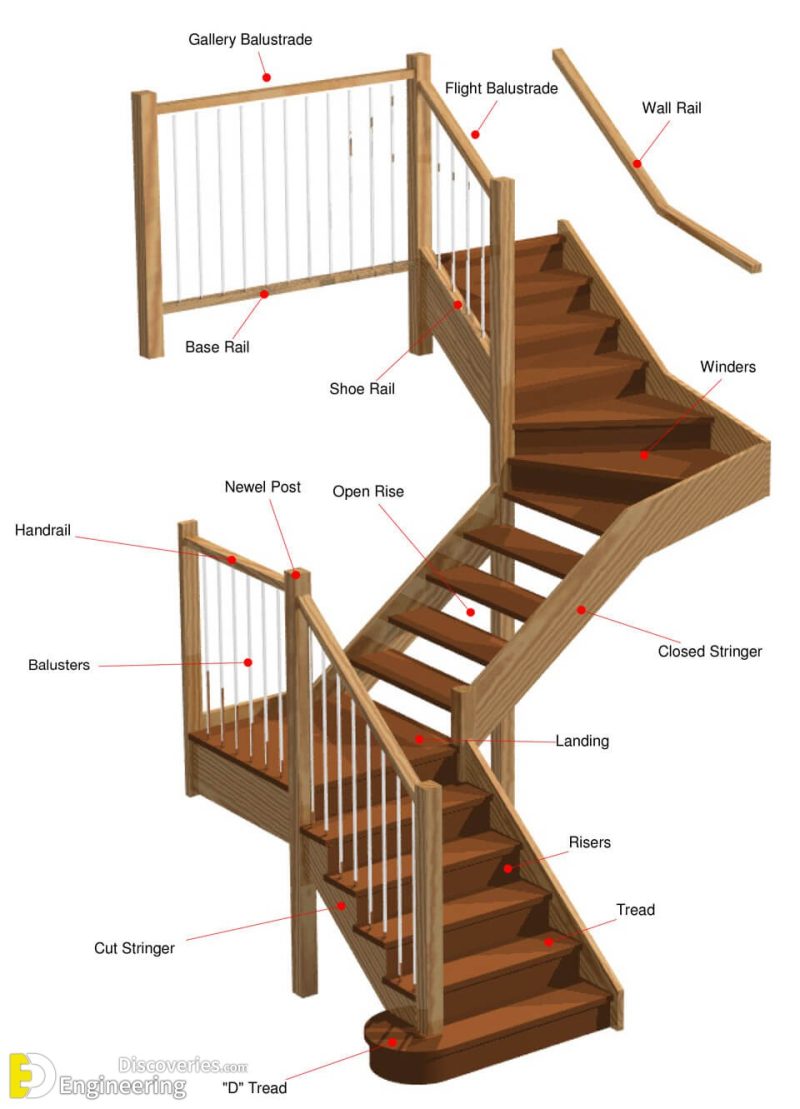
Standard Dimensions For Stairs
Standard Stair Width. Building codes and regulations vary depending on location, but most follow similar guidelines for stair dimensions to ensure safety and accessibility.. Handrails must also be continuous, running the full length of the staircase, and have a graspable shape. Headroom. The minimum headroom requirement for both the IRC and.
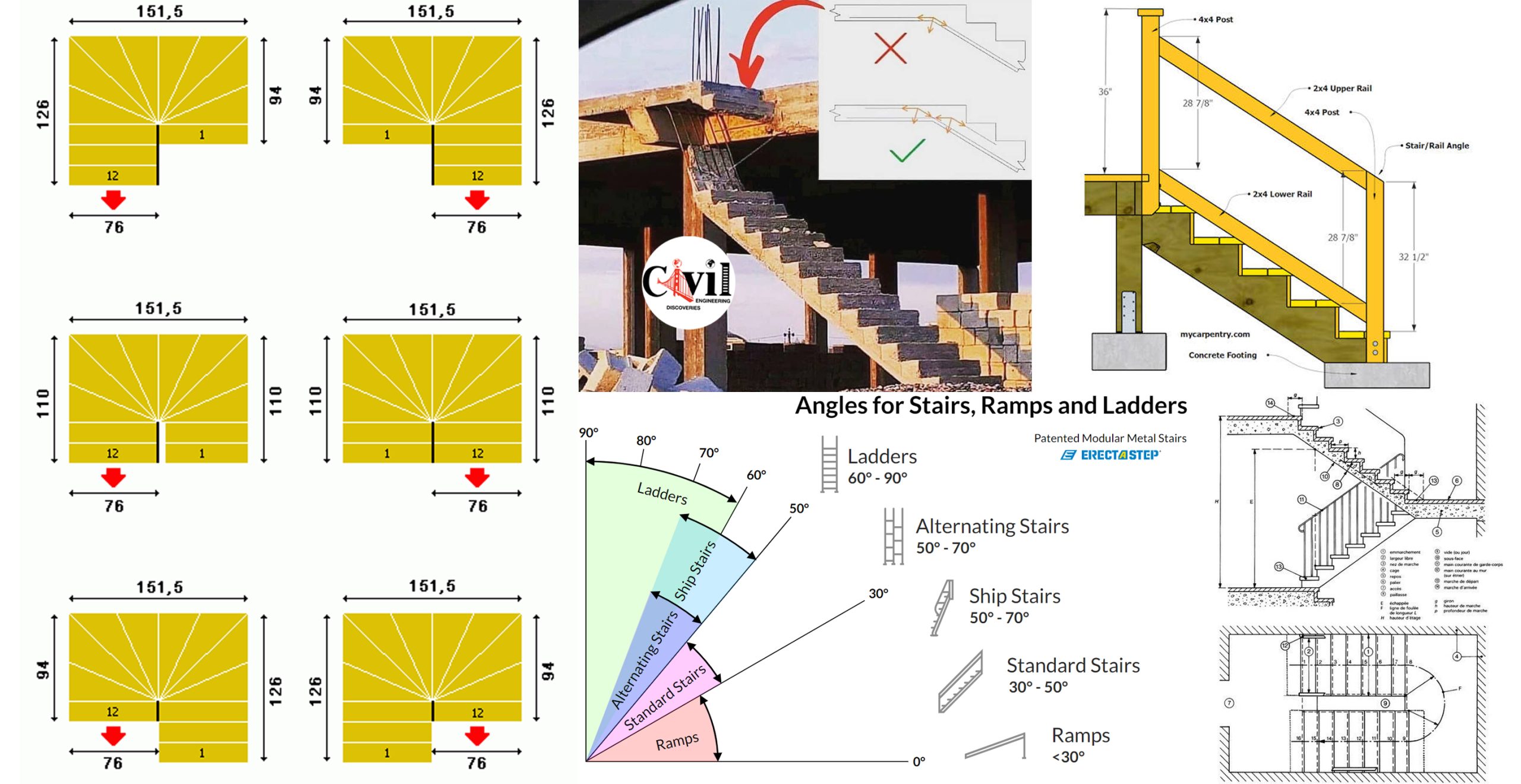
Standard Stair Sizes And Dimensions Engineering Discoveries
Ideal Stair Rule of Thumb. Perfect stair (for most users): Rise = 7", Run = 11". The sum of one stair or step tread or "run" and one step height or "riser" should always be about 17" or 18" in total. As the step rise gets shorter. the step run must get longer.
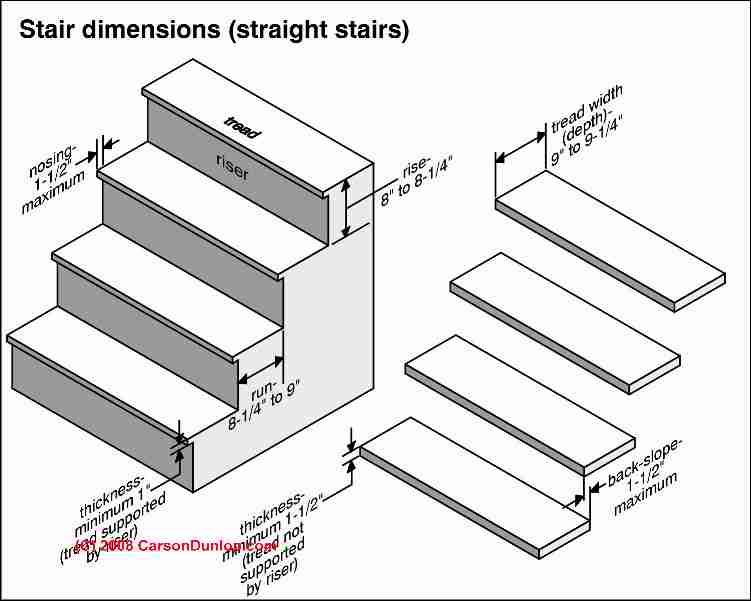
Stair step height Guide to Stair Riser Dimensions
Standard stairs handrails have to be more than 44 inches wide. A landing is that platform at the end of each step flight. Professionals recommend that every staircase should present a landing at every 12 feet (at least).
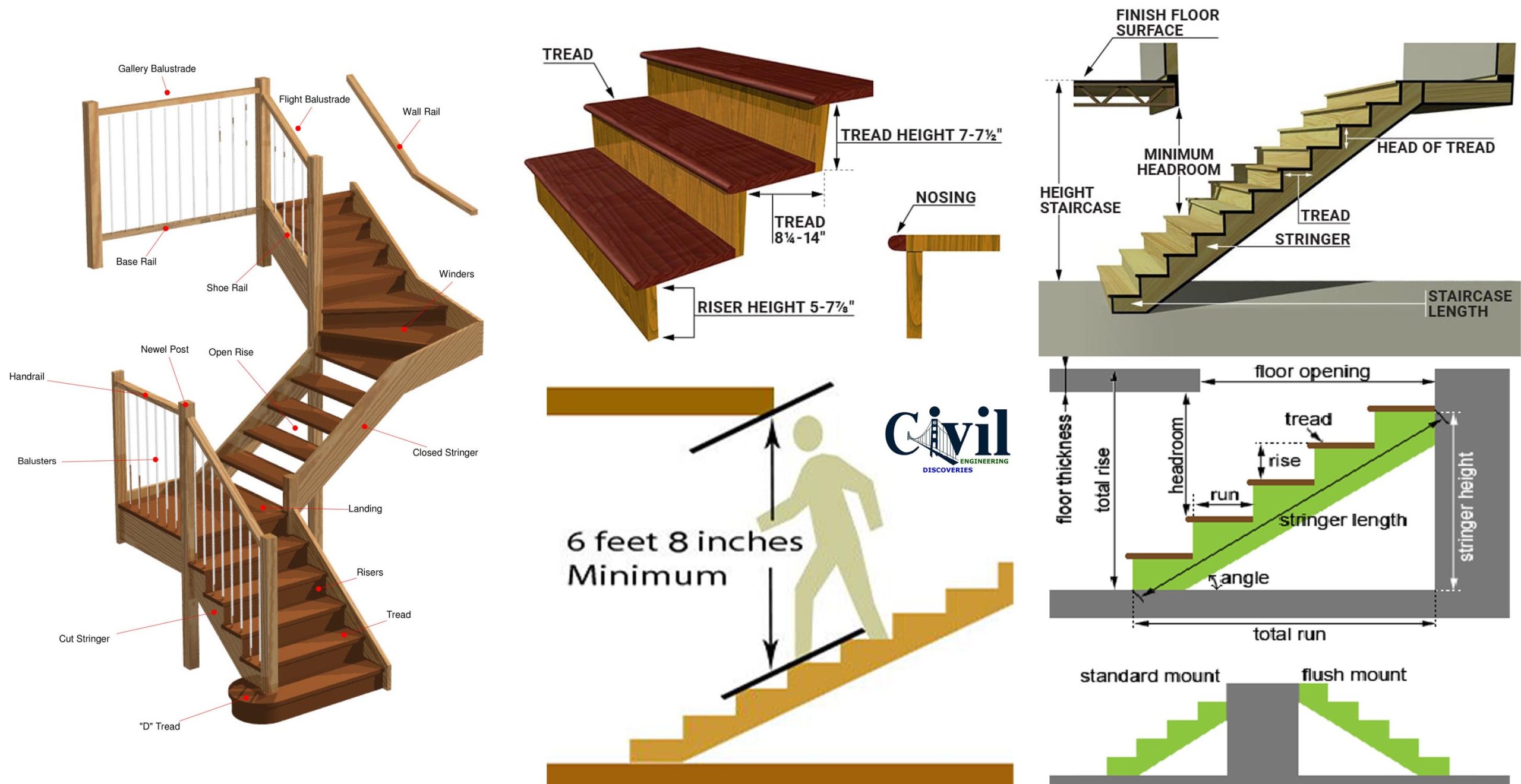
Standard Dimensions For Stairs Engineering Discoveries
The tread size (min 10ins / 25.4cm) is dictated by the average adult foot size, although it is not necessary to be able to fit your entire foot on a tread in order for walking up the stairs to be both comfortable and safe. The riser height (max 7¾ins / 19.7cm) is limited by the way in which we come down the stairs.
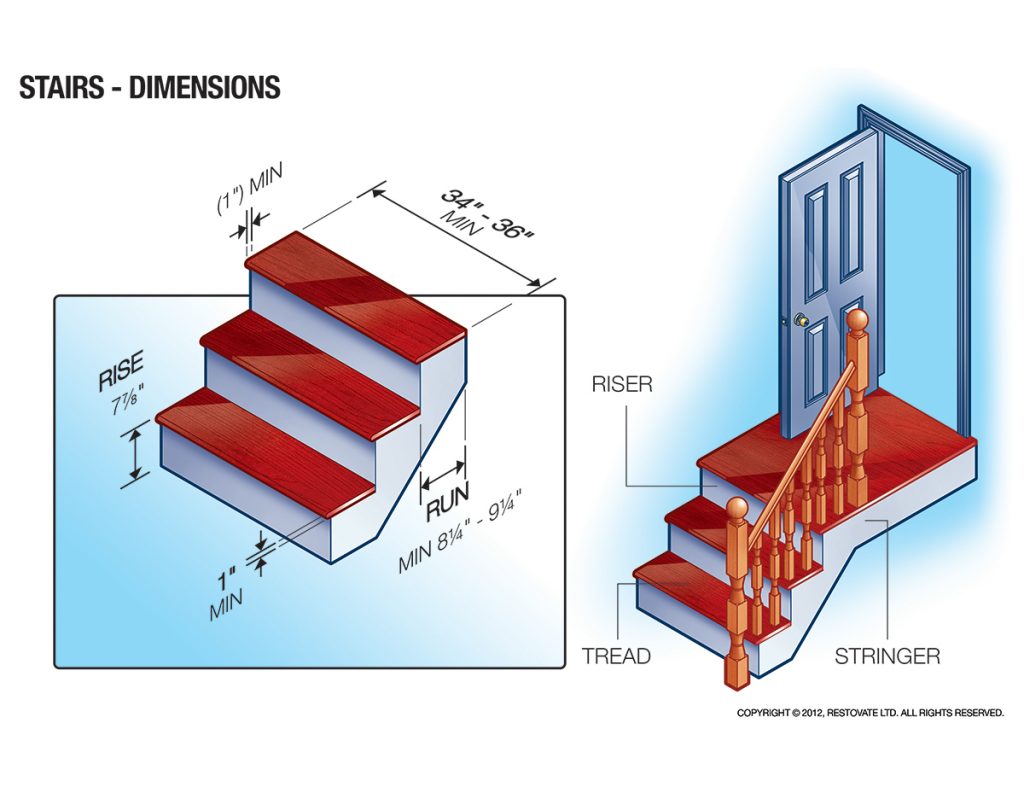
Stairs Make It Right® Home safety & Maintenance
→ stair will be comfortable Rule one says that rise plus run ( r+R) should equal 18 inches. Why? That's what most people find to be a comfortable stride on most stairs. You can cheat a bit up or down, but below 17" and more than 19" will result in steps that require strides either too big or too small for most people.

Standard Stair Sizes And Dimensions Engineering Discoveries
Therefore let us recap on the residential stair code requirements: Minimum 36 inch clear width for stairway. Maximum 4-1/2 inch handrail projection into stairway width, on either side. Minimum 6′-8″ headroom height clearance for stairway. Maximum 12′-7″ vertical height (rise) for a flight of stairs. Maximum 7-3/4 inch stair riser height.

Staircase Design How to Calculate Number of Riser and Treads of Staircase? lceted LCETED
Our stair rise and run calculator determines the details of your stairs for various combinations of known and unknown values. For example, we can assume that you know the rise and run of one step, and you want to calculate the remaining characteristics. How would you proceed?
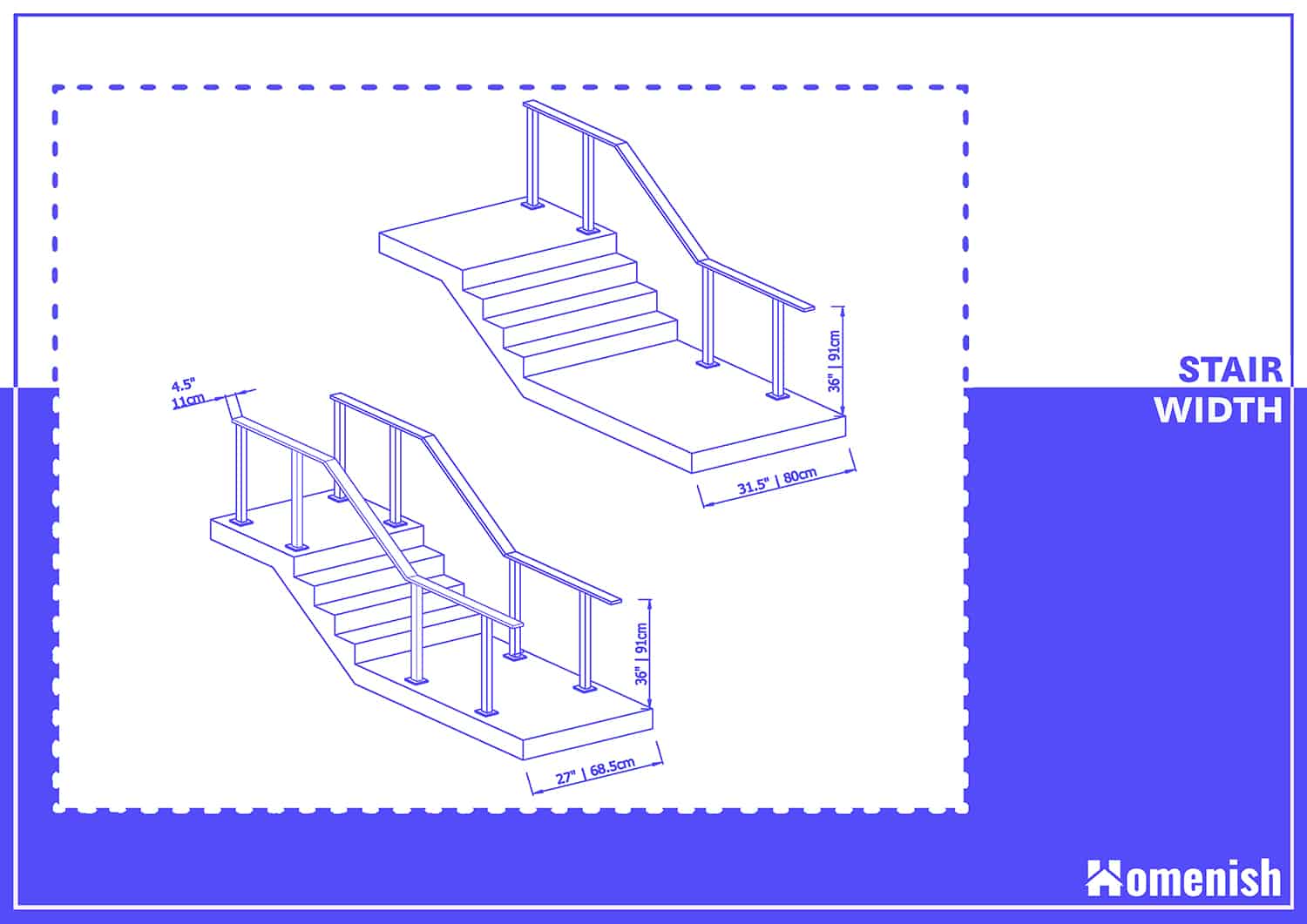
What Are the Stair Dimensions? (with Illustrations) Homenish
To determine their length, square the run, square the individual stair rise, and then add the 2 numbers together. From there, find the square root of the answer for the length of each stringer. For instance, if the run is 10 inches, square 10 by multiplying it by itself to get 100.

Residential Stair Codes EXPLAINED Building Code for Stairs Stairs handrail height, Stair
A: Rise. The distance from the floor to the top of the staircase. In this illustration, the total rise is 45 and 7/8 inches. B: Top Step. The top step can be slightly shorter than the other steps if the rise can't be divided evenly. It should be no more than 3/8 inches shorter than the bottom step. C: Total Run.
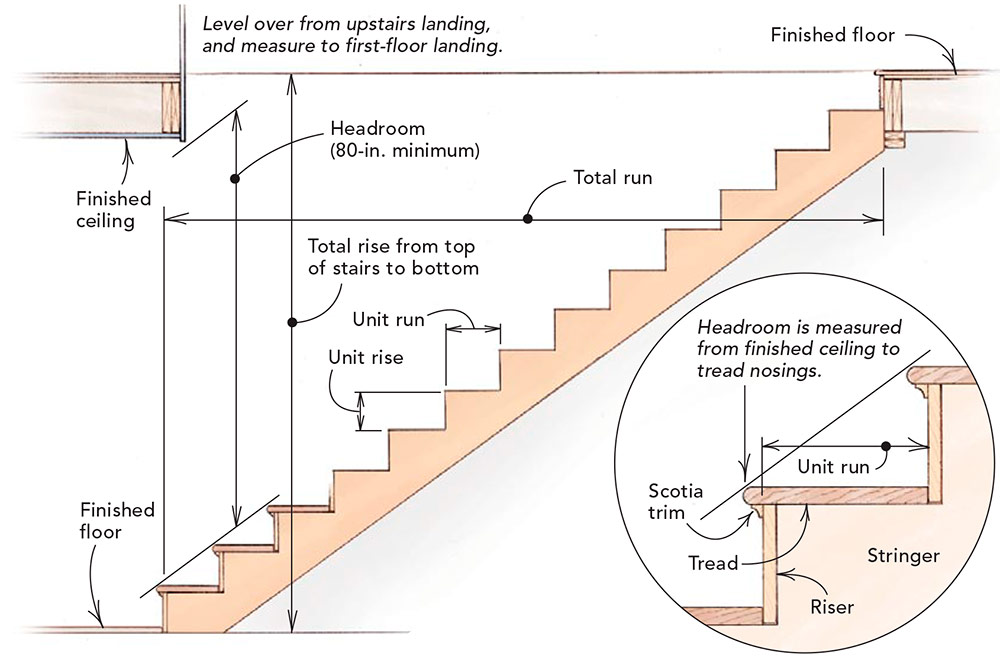
Strong and Simple Stairs Fine Homebuilding
The minimum recommended stair width is between 34" and 36" Across the width of the tread. Some codes such as CA/OSHA specify a minimum stairway width of 24" [35].. The minimum recommended stair landing length is 36" (or a length and width sufficiently greater than the swing of the door if a wider door is present.

Standard Stair Sizes And Dimensions Daily Engineering
Sample calculation of a staircase that should be 2.60 meters high. 1. Calculate the number of steps that will be needed. Considering an ideal riser of 18 cm, the height of the space is divided by.
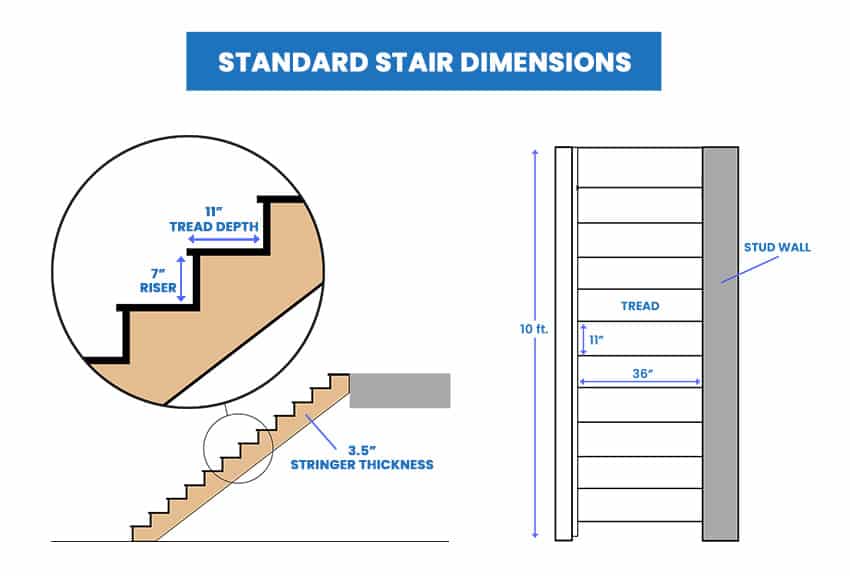
Stair Dimensions (Staircase & Railing Sizes Guide) Designing Idea
Those who study stairs believe a pitch of between 20 and 50 degrees is safe, and being within the range of 30 to 35 degrees is best. Another rule of thumb for riser and tread design is that the sum of the two dimensions be between 17 and 17 and one-half inches. If a riser is seven inches high the tread depth should be no more than 10 and one.

Residential Stair Codes EXPLAINED Building Code for Stairs Building code for stairs
Standard straight-run stair dimensions have a width of 36 inches or 91.4 centimeters, a tread depth of 11 inches or 28 centimeters, a riser size of 7 inches or 18 centimeters, and a length from the bottom to the top of 10 feet or 3 meters. Stair Width Dimensions Stair width is the length of a step from side to side.
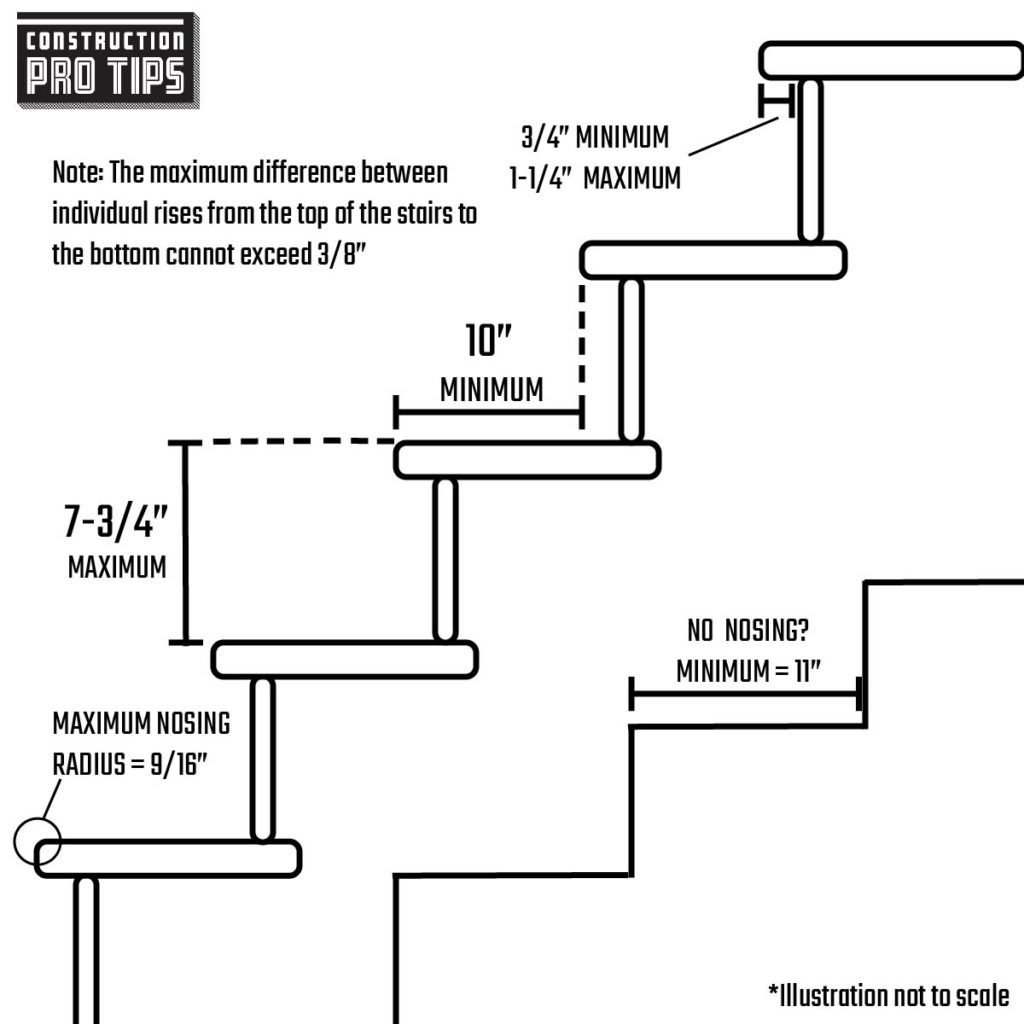
Code Check Stair Codes for Rise, Run, and Nosing The Family Handyman
The general rule for standard stair dimensions that is accepted by many general contractors and stair designers across the United States is known as the "7-11" rule. This means the rise is 7 inches and the run is 11 inches.